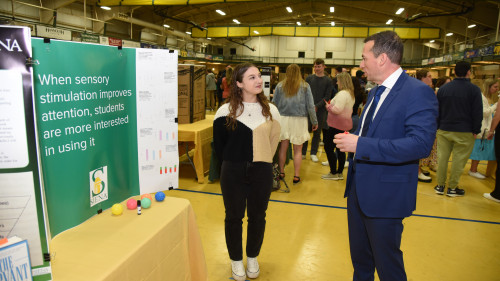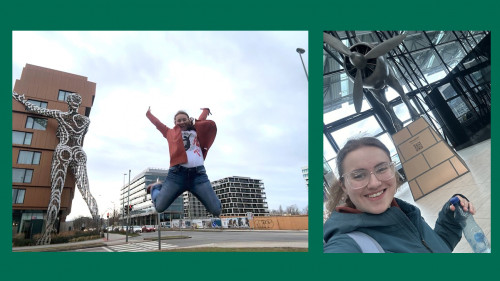
By Jim Eaton
On August 3, Lindsay McTague ’13 was sitting in her apartment at Duke University where she is pursuing doctoral studies in electrical engineering on a full scholarship. She was riveted to the images of a rocket shooting into space from a launching pad in Japan. She had a personal stake in the success of that launch: an instrument she helped to construct was on board.
“At Siena I spent a lot of time working on the Firestation experiment and that experience shaped my future,” McTague said. She was part of a team on campus that created the instrument designed to study lightning flashes and gamma rays emanating from the Earth's atmosphere. “I remember thinking we actually did it. Little Siena of Loudonville made it onto the International Space Station,” McTague said.
The project is a joint venture between Siena College and NASA's Goddard Space Flight Center. Allan Weatherwax, dean of the school of science, secured a National Science Foundation grant to help fund the undertaking and has been working closely with Doug Rowland at NASA/GFSC and lead engineer Joe Kujawski.
“Thanks in large part to our students we were able to complete and deliver the payload in time for the launch,” Weatherwax said.
Current physics majors Meghan Harrington ’14, Alyssa Endres ’14, Nguyen Truong ’14 and Kevin Melsert ’13 also played key roles in building the instrument and participated in payload integration in Houston, Texas last year. The resulting data sets will allow researchers to explore the relationship between lightning and bursts of radiation called Terrestrial Gamma Ray Flashes (TGFs), a little-understood phenomenon first discovered by scientists nearly two decades ago.
“Firestation will provide the first direct evidence for a relationship between lightning and TGFs,” says Weatherwax. “Identifying the source of TGFs will be a huge step toward understanding the physics of lightning and its effect on Earth's atmosphere.”
Recently the instrument was installed robotically to the International Space Station, and in late September Siena College will start to receive vital information from the instrument.

